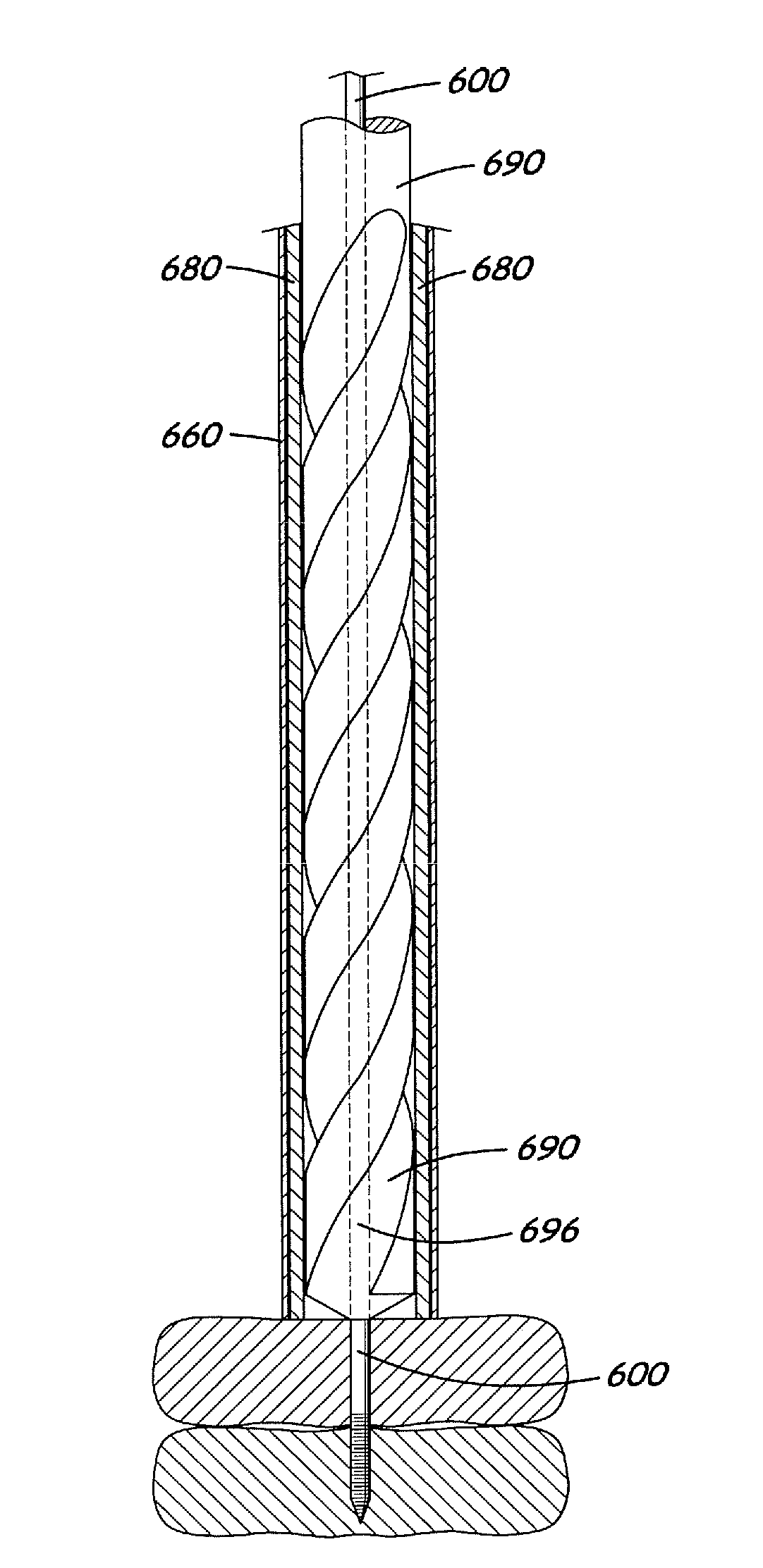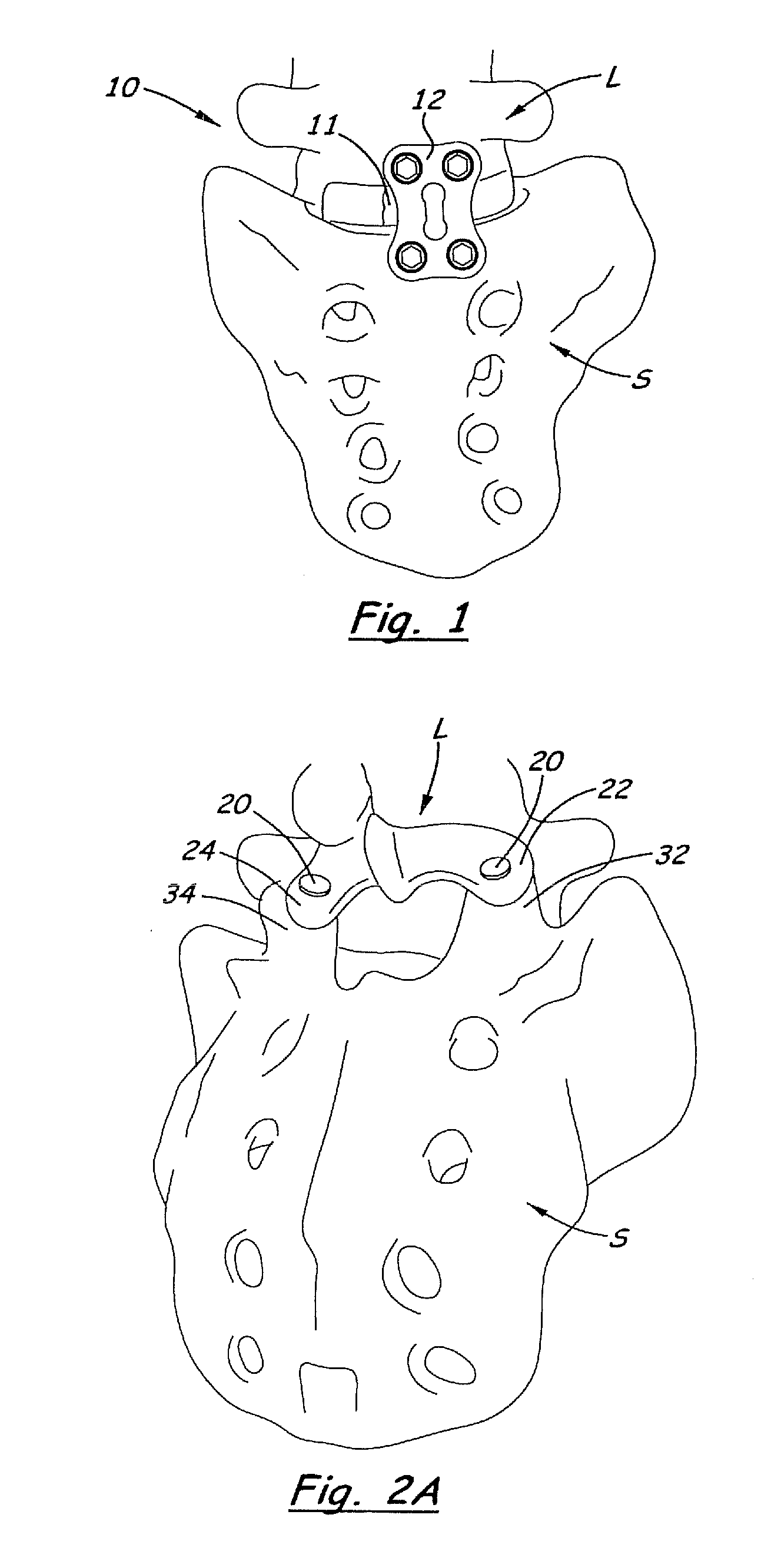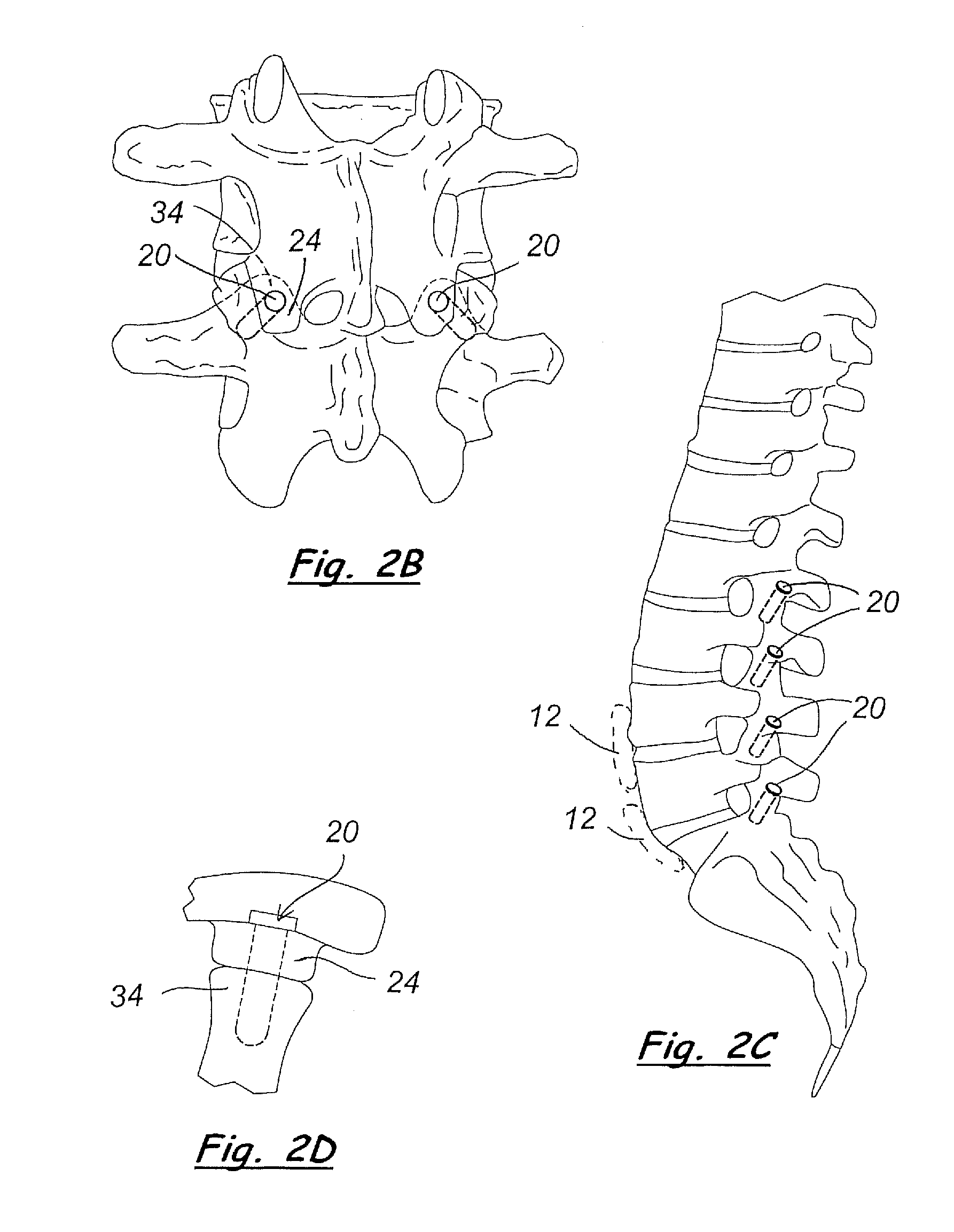Tack for spine fixation
a technology for fixing the spine and a clamping device, which is applied in the direction of surgical staples, prostheses, ligaments, etc., can solve the problems and achieve the effect of extreme non-invasive apparatus and surgery methods
- Summary
- Abstract
- Description
- Claims
- Application Information
AI Technical Summary
Benefits of technology
Problems solved by technology
Method used
Image
Examples
Embodiment Construction
[0037]Referring to the Figures, there are shown several, but not the only, embodiments of the invented tack and methods, which are preferred for spine fixation and which may be used in various locations along the lumbar region of the spine, for example. Embodiments of the invented tacks may be used in other locations in the body, for example, wherein the tack may fix two portions of bone relative to each other or wherein the tack may be an anchor placed into a bone for attaching other structure to the bone.
[0038]Preferably, the invented tacks are used in combination with an anterior fixation plate, such as that shown in FIG. 1. FIG. 1 is an anterior view of the lower lumbar region 10 of the spine, wherein one embodiment of an interbody implant 11 (preferably allograft), has been installed between the lowermost vertebra L and the sacrum S, and a fixation plate 12 has been installed on the anterior surfaces of said lowermost vertebra and sacrum. The rigid fixation plate 12 is screwed ...
PUM
 Login to View More
Login to View More Abstract
Description
Claims
Application Information
 Login to View More
Login to View More - R&D
- Intellectual Property
- Life Sciences
- Materials
- Tech Scout
- Unparalleled Data Quality
- Higher Quality Content
- 60% Fewer Hallucinations
Browse by: Latest US Patents, China's latest patents, Technical Efficacy Thesaurus, Application Domain, Technology Topic, Popular Technical Reports.
© 2025 PatSnap. All rights reserved.Legal|Privacy policy|Modern Slavery Act Transparency Statement|Sitemap|About US| Contact US: help@patsnap.com



